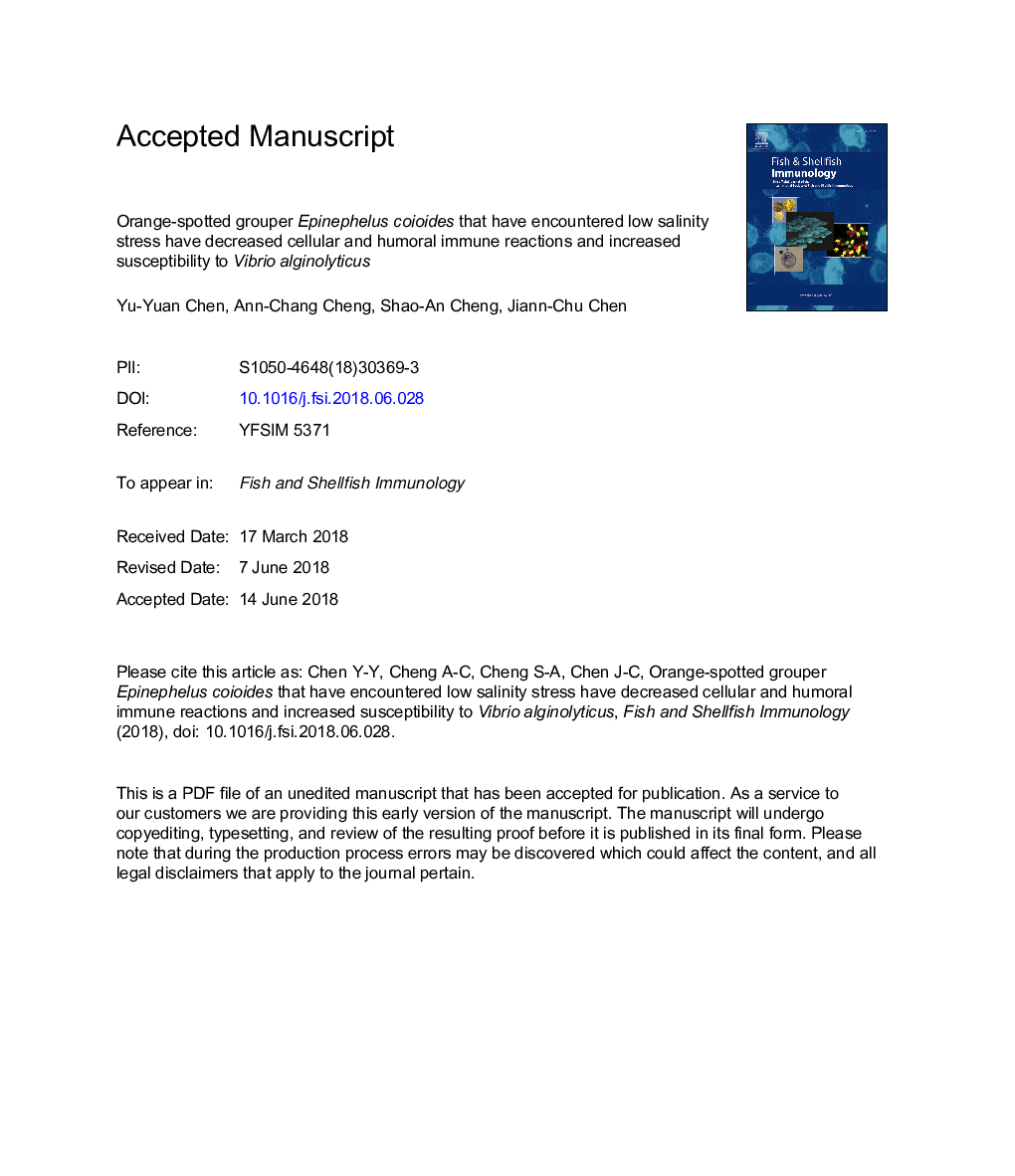| Article ID | Journal | Published Year | Pages | File Type |
|---|---|---|---|---|
| 8498286 | Fish & Shellfish Immunology | 2018 | 22 Pages |
Abstract
Orange-spotted grouper Epinephelus coioides reared at 34â° and 27â¯Â°C were abruptly transferred to 6â°, 20â° and 34â° (control) and examined for innate cellular and humoral parameters after 3-96â¯h. Total leucocyte count (TLC), respiratory burst (RB), phagocytic activity (PA), alternative complement pathway (ACP) and lysozyme activity were significantly decreased 3-6â¯h, 3-6â¯h, 3-96â¯h, 3-96â¯h and 3-96â¯h, respectively after transferal into 6â° salinity. TLC, RB and PA significantly increased after 3-48â¯h, 3-96â¯h and 3-24â¯h, respectively, with recovery of TLC and PA after 96â¯h and 48-96â¯h, whereas ACP and lysozyme activity significantly decreased 3-96â¯h after being transferred to 20â°. In another experiment, grouper reared at 34â° and 27â¯Â°C were injected with Vibrio alginolyticus grown in tryptic soy broth (TSB) at 2.3â¯Ãâ¯109â¯colony-forming units (cfu) fishâ1 and then transferred to 6â°, 20â° and 34â° (control). The cumulative mortalities of V. alginolyticus-injected fish held in 6â° were significantly higher than in injected fish held at 20â° and 34â°. It was concluded that grouper E. coioides encountering a 34â°-6â° salinity drop stress exhibited a depression in immunity as evidenced by decreased cellular and humoral parameters and increased susceptibility to V. alginolyticus. Grouper encountering a salinity stress drop from 34â° to 20â°, however, exhibited decreased humoral immune parameters but also increased TLC and cellular immune parameters, indicating immunomodulation.
Related Topics
Life Sciences
Agricultural and Biological Sciences
Aquatic Science
Authors
Yu-Yuan Chen, Ann-Chang Cheng, Shao-An Cheng, Jiann-Chu Chen,
